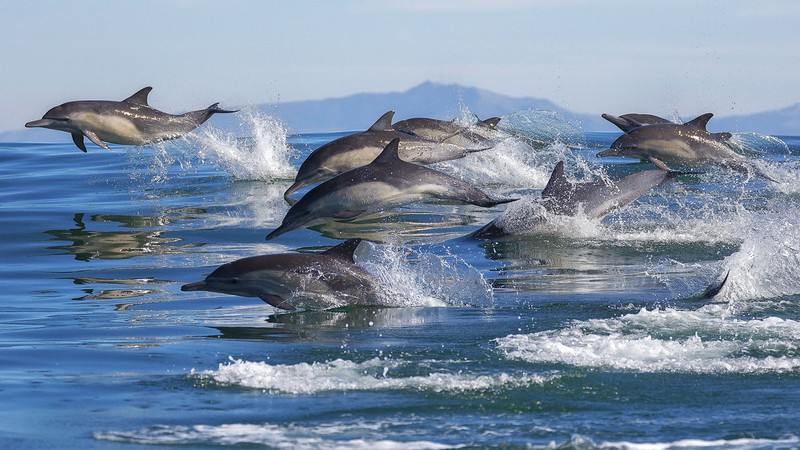Designation has brought environmental protection, scientific discovery—but it almost didn’t happen.


The deep waters of the Monterey Bay shelter an array of marine mammals. Chase Dekker Shutterstock
Good Times environmental reporter Erin Malsbury looks back at how the Monterey Bay National Marine Sanctuary came to be—a vital stretch of deep-sea habitat that stretches from Marin to Cambria along the California coast. The valuable marine reserve runs nearly 13,000 feet deep and includes beaches, rocky shorelines, estuaries, and kelp forests.
This September, the sanctuary will mark its 30th anniversary, while the National Marine Sanctuary Act commemorates its 50th. The celebration includes a nationwide photo contest and the issuance of 15 USPS stamps at a ceremony in Santa Cruz on Aug. 5. Featured in the July 13 issue of Good Times, the piece explores how this vital habitat was preserved, and what has been learned by scientific exploration.
And there is still more work to be done.“We’ve mapped it all, but we haven’t gone down with the remotely operated vehicle and actually explored very much of it. I’d say probably less than 10%,” George Matsumoto, senior education and research specialist at MBARI, tells Malsbury.
In the same issue, reporter Leonie Sherman writes about plans to protect an even bigger swath of California’s biologically productive coastal waters. The proposed Chumash Heritage National Marine Sanctuary would stretch from the southern end of the Monterey Bay National Marine Sanctuary to the Channel Islands National Marine Sanctuary, creating a protected marine area of almost 15,000 square miles. The National Oceanic and Atmospheric Administration hopes to complete designation by the winter of 2023.
Read the stories in their entirety here:
What the Monterey Bay National Marine Sanctuary’s 30th Anniversary Really Means
Behind the Push for a Chumash Heritage National Marine Sanctuary